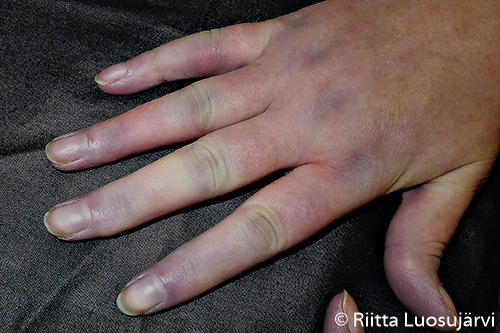Raynaud's Phenomenon in the Fingers and on the Back of the Hand

Raynaud's phenomenon in the fingers and on the back of the hand. A finger often shows various phases of the tricolour changes; here, this can be seen in all fingers.
Picture and text: Riitta Luosujärvi